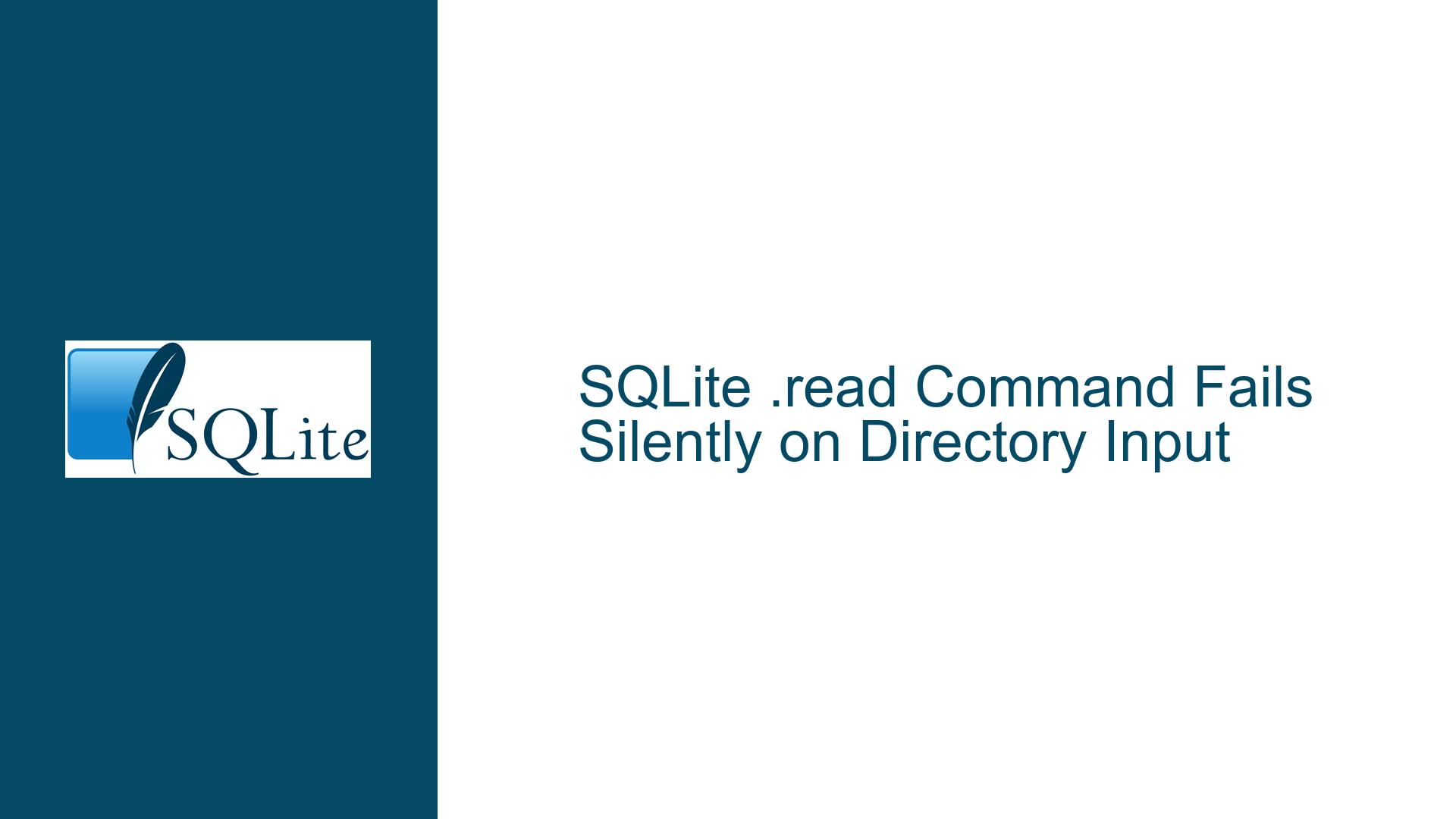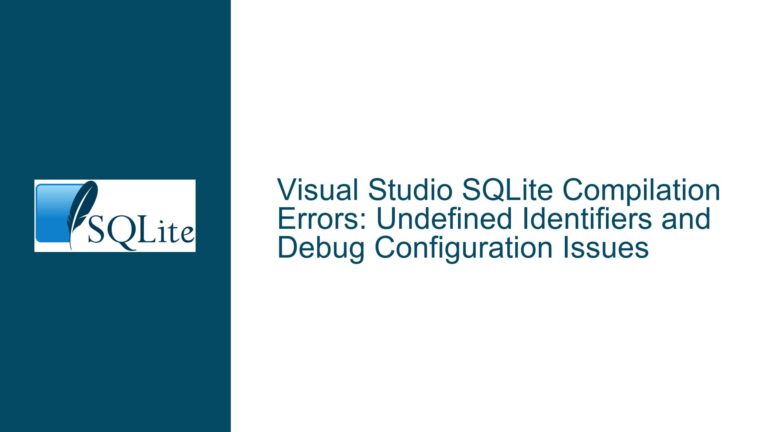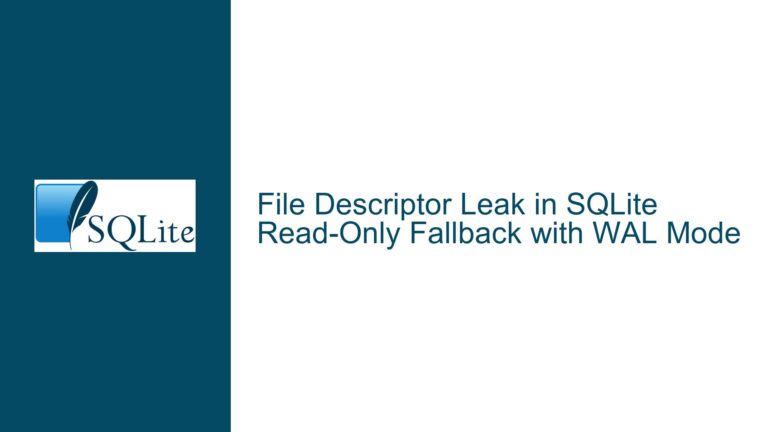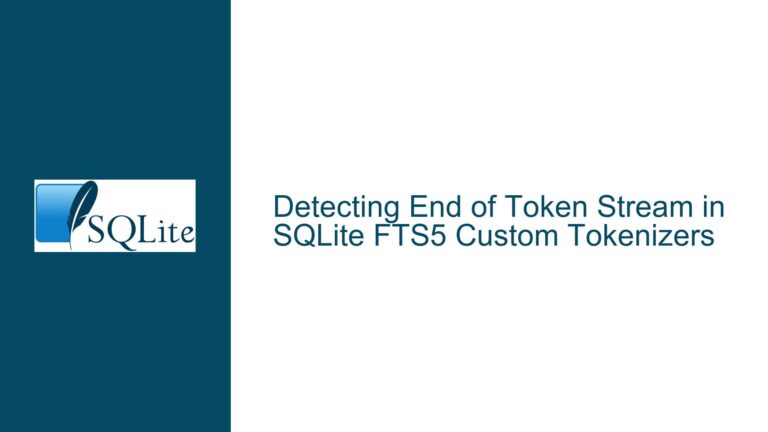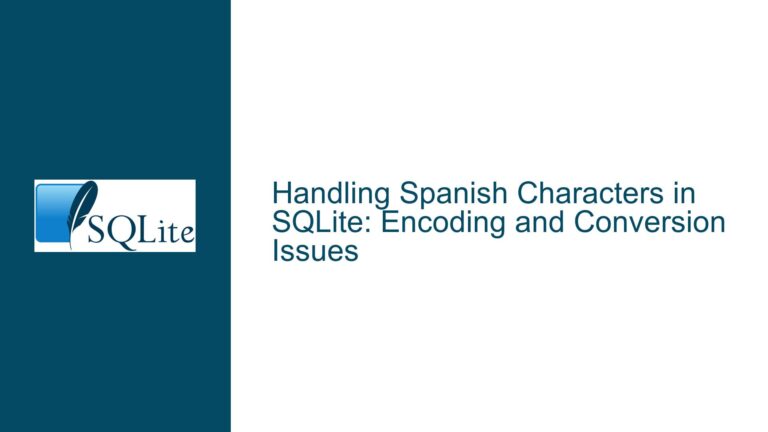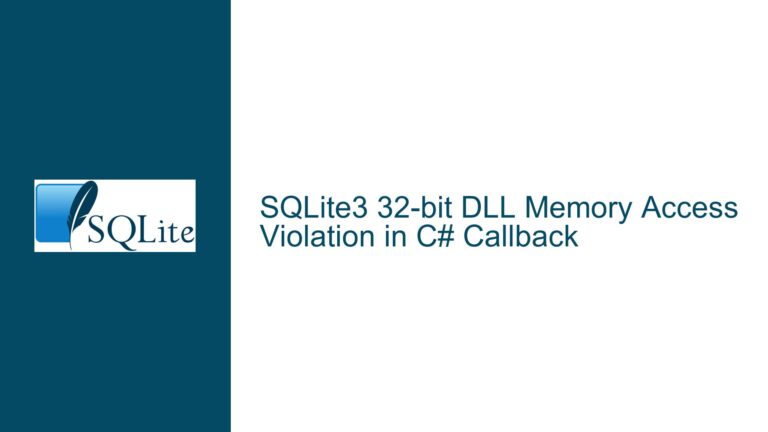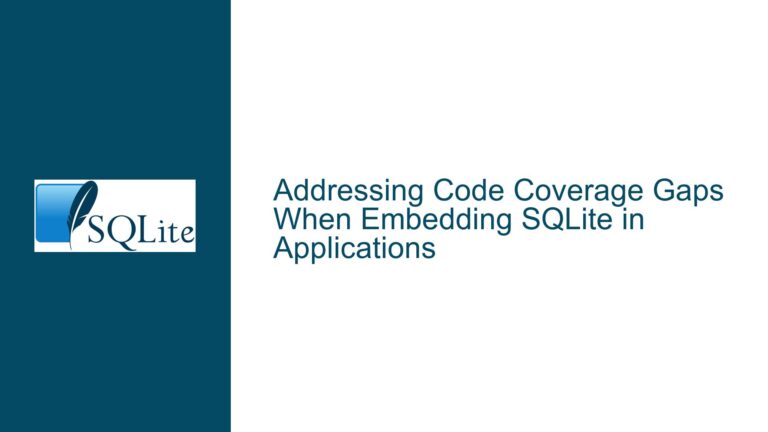SQLite .read Command Fails Silently on Directory Input
Silent Failure of .read Command with Directory Path
The .read command in SQLite is designed to execute SQL statements from a specified file. However, when a directory path is mistakenly provided instead of a file path, the behavior of the .read command becomes inconsistent across different operating systems and SQLite versions. On Unix-based systems, the command appears to do nothing, while on Windows, it explicitly throws an error. This discrepancy raises questions about the expected behavior of the .read command when encountering a directory and whether it should provide a clear error message to the user.
The core issue lies in how SQLite handles the .read command internally. When a path is provided, SQLite attempts to open and read the specified resource. If the resource is a directory, the behavior diverges based on the underlying operating system and its file system APIs. On Unix-based systems, directories can be opened using fopen() or open(), but reading from them may result in undefined behavior or no operation at all. On Windows, the system API typically prevents opening directories as files, resulting in an explicit error.
This inconsistency is problematic for users who may accidentally provide a directory path instead of a file path. The lack of a clear error message on Unix-based systems can lead to confusion, as the user may not realize that the .read command failed due to an incorrect input. This issue is further compounded by the fact that different SQLite versions and operating systems exhibit different behaviors, making it difficult to predict the outcome of the .read command in such scenarios.
Directory Handling Differences Across Operating Systems
The behavior of the .read command when provided with a directory path is influenced by the underlying operating system’s file system APIs and how they handle directory access. On Unix-based systems, directories can be opened using fopen() or open(), but reading from them is not well-defined. Historically, some Unix systems allowed reading directories as binary files, but this behavior has been largely deprecated in modern systems. Instead, attempting to read from a directory typically results in an error, such as EISDIR (Is a directory), indicating that the operation is not supported.
In contrast, Windows systems generally prevent directories from being opened as files. When the .read command attempts to open a directory on Windows, the system API returns an error, which SQLite then propagates to the user. This results in a clear error message, such as "Error: cannot open ‘test’", making it immediately apparent that the input was invalid.
The difference in behavior between Unix-based systems and Windows can be attributed to the design of their respective file system APIs. Unix-based systems traditionally treat directories as special files that can be opened and read, albeit with limited functionality. Windows, on the other hand, enforces a stricter separation between files and directories, preventing directories from being treated as files in most contexts.
This divergence in behavior is further complicated by the fact that different Unix-based systems may handle directory access differently. For example, some systems may allow fopen() to succeed on a directory but fail on subsequent read operations, while others may return an error immediately. This variability makes it challenging for SQLite to provide a consistent user experience across all platforms.
Implementing Error Handling and User Feedback for Directory Inputs
To address the issue of silent failures when the .read command is provided with a directory path, SQLite should implement explicit error handling and user feedback mechanisms. This would involve checking whether the specified path is a directory before attempting to open and read it. If the path is determined to be a directory, SQLite should immediately return an error message, informing the user that the input is invalid.
One approach to implementing this check is to use platform-specific APIs to determine whether the specified path is a directory. On Unix-based systems, the stat() or lstat() functions can be used to retrieve information about the file system object, including its type. If the object is a directory, SQLite can return an error message before attempting to open it. On Windows, the GetFileAttributes() function can be used to achieve the same result.
In addition to checking the file type, SQLite should also ensure that the .read command provides consistent behavior across all platforms. This could involve standardizing the error messages returned when a directory is specified, regardless of the underlying operating system. For example, SQLite could return a message such as "Error: ‘v3_port’ is a directory, not a file" on all platforms, making it clear to the user that the input was invalid.
Another consideration is the handling of edge cases, such as symbolic links or special file system objects. On Unix-based systems, symbolic links can point to directories, and special file system objects (e.g., device files) may also be encountered. SQLite should ensure that these cases are handled appropriately, either by resolving symbolic links before checking the file type or by providing specific error messages for unsupported file types.
Finally, SQLite should document the expected behavior of the .read command when provided with a directory path. This documentation should clearly state that directories are not valid inputs for the .read command and that an error message will be returned if a directory is specified. This would help users understand the limitations of the command and avoid confusion when encountering this issue.
By implementing these changes, SQLite can provide a more consistent and user-friendly experience when handling directory inputs with the .read command. This would not only improve the usability of the command but also reduce the likelihood of user errors and confusion.
